Bonhams Hong Kong 2010 Autumn Auctions: Fine Chinese Ceramics and Works of Art
Over 100 lots of exquisite Chinese ceramics and works of art with an estimate of HK$15 - 22 million will go under the hammer. The highlight of the auction is the Dr Alan E. Feen Collection of Chinese Glass. Dr Alan Feen, a radiation oncologist from Tulsa, Oklahoma, began collecting Chinese glass in 1986 when he purchased his first object, the small Qianlong ruby-red and white glass brush washer in San Francisco. Dr Feen's interest in Chinese glass commenced in 1983 during a trip to China. He has now decided to share his collection with others, with a second sale of the collection to be held in San Francisco in 2011.
An extremely rare ruby-red and white overlay glass 'ruyi' jar.Qianlong four-character wheel-cut mark and of the period. photo Bonhams
Of elegant rounded form, springing from an accentuated foot, and tapering to the mouth, the lower overlay of a rich ruby-red colour, finely carved as a stylised peony flower with eight interlocking petals with deftly incised veining, the central body an opaque white colour, the upper overlay carved with ruyi motifs, the lipped rim intricately incised with a four character kaishu mark, original carved wood stand; 8.3cm diam. Estimate: HK$200,000 - 400,000, USD 26,000 - 52,000
Provenance: Ashkenazie & Co., San Francisco, 4 November 1986.
Illustrated 出版: A Chorus of Colors, Asian Art Museum of San Francisco, 1995, p.99, cat. no.73
R.Kleiner, Chinese Snuff Bottles in the Collection of Mary & George Bloch, British Museum Press, London, 1995, p.xxiii, fig.5
Catalogue of the International Art Fair, New York, March 1997, p.15, cat. no.17
清乾隆 白套紅玻璃蓮瓣紋缽「乾隆年製」楷款
來源: 於1986年11月4日購自三藩市Ashkenazie & Co.
Qianlong-reign marked jars of this type are extremely rare, representing the pinnacles of achievement of the Beijing Palace glass workshops. The precise form, quality of the ruyi-design carving, and powerful contrasting colours mark this select group out amongst other Imperial Qing dynasty glass wares. A closely related jar from the Qing court collection, preserved in the Palace Museum, Beijing, with additional bands in sapphire-blue around the neck and foot, is illustrated in Luster of Autumn Water: Glass of the Qing Imperial Workshop, Beijing, 2005, p. 208, pl. 59.
Only one other jar of this type appears to have been offered at auction, a slightly larger (12.5cm diameter) example, sold at Sotheby's Hong Kong, The Collection of a Parisian Connoisseur, 8 April 2007, lot 519, differing from the current jar in that the four-character mark is inscribed around the base. Another red-overlay jar, formerly in the Robert Clague Collection, and now in the Hong Kong Museum of Art, is illustrated in The Robert H. Clague Collection. Chinese Glass of the Qing Dynasty, Phoenix Art Museum, Phoenix, 1987, cat. no 18. Another unpublished example is in the collection of the Bristol City Museum and Art Gallery, England.
Many of the glass wares in the Feen collection can be comparable with those in the Qing Court Imperial Collection. They include a turquoise-green glass vase, a rare yellow glass zhadou, an extremely rare ruby-red and white overlay glass 'ruyi' jar which represents the pinnacles of achievement of the Beijing Palace glass workshops. A rare 'amethyst' glass bottle vase is published in the September 2009 edition of "The National Palace Museum Monthly of Chinese Art".
A turquoise-green glass vase;Qianlong four-character wheel-cut mark and of the period. photo Bonhams
The heavily constructed body of slender curved form, tapering elegantly from the narrow foot to the swollen central body, rising to a long flared neck, the colour of a rich blue-green suffused with black inclusions and striations in imitation of turquoise, the countersunk base wheel cut with a four-character mark within a double square.18.1cm high. Estimate: HK$40,000 - 60,000, USD 5,200 - 7,700
Provenance: Ashkenazie & Co., San Francisco, 30 October 1986.
Illustrated 出版: A Chorus of Colors, Asian Art Museum of San Francisco, 1995, pp.80-81, cat. no.50
清乾隆 仿綠松石色玻璃橄欖瓶「乾隆年製」楷款
來源:於1986年10月30日購自三藩市Ashkenazie & Co.
A vase of identical size and shape from the Qing court collection, preserved in the Palace Museum, Beijing, but in a brilliant 'sky-blue', is illustrated in Luster of Autumn Water: Glass of the Qing Imperial Workshop, Beijing, 2005, p. 154, pl. 24. See also a turquoise glass vase illustrated in Elegance and Radiance: Grandeur in Qing Glass. The Andrew K.F. Lee Collection, The Art Museum, The Chinese University of Hong Kong, Hong Kong, 2000, pl.48.
Dr Alan Feen, a radiation oncologist from Tulsa, Oklahoma, began collecting Chinese glass in 1986 when he purchased his first object, the small Qianlong ruby-red and overlay white brush washer (Lot 208) in San Francisco. Dr Feen had been looking at and studying Chinese glass since a 1983 trip to China, a land he had always wanted to visit. He has now made the decision to let go of the collection for others to enjoy. A second sale of the glass will be held in San Francisco in 2011.
The Alan E. Feen Collection of Chinese Glass
Emily Byrne Curtis
His interest in Chinese glass commenced in 1983. Coincidently this same year also marked the publication of Yang Boda's seminal study of glass wares from the Qing Dynasty (1644-1911). Working with records of the Workshops of the Imperial Palace (Zaobanchu), Yang was able to chart the course of Imperial glassmaking from the Yongzheng reign (1723-35) to the end of the Xuantong (1909-11) period. However, since records for the Kangxi era (1662-1722) were lacking, little was known about the Imperial glass workshop the emperor had established in 1696.
Fortunately, historical documents in the archives in Rome and the Vatican contained more specific information regarding the founding of the glassworks. They revealed that the workshop itself, was located within the confines of the Imperial City on a piece of land adjacent to the French Jesuits' church. This proved to be in accordance with two eighteenth century Chinese texts which state that the entire complex was located on the east side of a street named Canchikou. From other documents conserved in the Japonica/Sinica division of the Archivum Romanum Societatis Iesu, we learn from several letters dating to 1696 and written by Jean de Fontaney, SJ (洪若翰 Hong Ruohan), that this glassworks had been erected by Kilian Stumpf, SJ (紀理安 Ji Lian), that it was already producing glass wares. According to the accounts written by Matteo Ripa (馬 國 賢 Ma Guoxian) and housed in the archives of Archivio Storico de Propaganda Fide, in 1711 the glass workshop was still under Stumpf's direction, and in May 1715 Ripa recorded how Stumpf had built many furnaces for glass making, while attending to the needs of a great number of craftsmen, all of which required his constant attention.
Continuing on, Theodorico Pedrini, CM (德理格De Lige) sent a request to Rome for examples of glass with gold sparkles that shine. Pedrini also added that the glassworks was experiencing difficulties in making this variety. His description brings to mind the copper particles found in aventurine glass. The glass batch for aventurine was in fact, hard to make and nearly impossible to work by blowing. Nonetheless, in 1705 Kangxi presented the military governor of Jiangsu with seventeen pieces of glass among which were two blue vases speckled with gold. All of this reminds one of the vase of transparent blue glass in Dr. Feen's collection (Lot 216) which contains spangles (pasta stellaria) imitating aventurine. It may be noted further, that similar examples of this type of glass may be found in the collection of the Beijing Palace Museum.
A letter written by Jean-François Foucquet, SJ (傅 聖 澤 Fu Shengze) and preserved in the Biblioteca Apostolica Vaticana describes in detail the gifts Kangxi was sending to the King of Portugal in 1721. Among the glassware we find descriptions for plates the color of celestial red; cups with flower pattern the color of blue sky after rain (yuguo tianqing); pots and plates in the same shade; plates of sky-blue (tianlan); cups and plates of white glass ornamented with flowers; and five cups of white glass and adorned with gilt on the exterior. The latter description may be compared to a pair of gilt decorated bowls (Lot 219) in the Feen Collection which have a four character mark of the Qianlong emperor (r.1736-95) on their bases, representing a style of decor that can be traced back to the earliest days of Imperial glassmaking.
Foucquet's references to glass with flower patterns recalls a mention by Lodovico Antonio Appiani, CM (畢 天 祥 Bi Tianxiang), of having been in a room 'full of young artisans who were carving floral patterns on the glasswares,' while the distinctions made on Foucquet's list between vessels of 'sky-blue' and the 'blue sky after rain' colours impart a distinctive Chinese sensibility. One might suggest that the sky-blue tone is met by the large vase (Lot 228) whose colour has also been referred to as being 'clair de lune.' As to the color of 'blue sky after rain,' this description was probably derived from that of the mysterious Chai stoneware made during the reign of Emperor Shizong ( r. 953-59) in the Five Dynasties period.
Yongzheng (r.1723-35) is said to have exhibited a pronounced preference for vessels made of bright red and purple glass. The method utilized to achieve these colours is believed to have been transmitted to China in the following manner. Kilian Stumpf had attended the Jesuit college in Mainz where the latest modes to produce ruby glass were known. This process included the addition of colloidal gold (gold dispersed as fine particles) to the glass formula. This technology had been transmitted to China has been confirmed by analytical studies of specimens from the Kangxi and Yongzheng periods which showed that the red, pink, and purple enamel colors employed in decorating porcelain had been prepared from ruby glass which contained colloidal particles of gold. In the absence of documented examples for Foucquet's 'celestial red' glass, one can only propose consideration of vessels such as the vase of transparent red glass (Lot 234) might fit this description, and that its color was obtained by making use of this 'new' technology. This reasoning may be applied also to the small bottle vase of transparent amethyst glass (Lot 232), and the fluted vase of opaque pink glass (Lot 231), with incised Yongzheng nian zhi marks in standard script on the slightly recessed bases of both vessels.
The Feen Collection contains some notable examples of glass wares intended for scholarly pursuits such as the brush rest of white glass imitating nephrite, in the form of a crouching boy (Lot 222). Beautifully finished, it was probably intended for the desk of a member of the scholar-literati class, who would have only surrounded themselves with objects of the utmost refinement. Among the other vessels a scholar might have placed on his desk include a brush washer (Lot 205), a brushholder (Lot 204), and a zhadou (Lot 203). The zhadou's wheel engraved Qianlong nian zhi (1736-95) mark within a double square on the base, combined with the yellow color of the three vessels suggest an attribution to the Qing court, especially when one factors in the yellow glass zhadan bearing a Yongzheng mark, which is in the collection of the Beijing Palace Museum. To this group may be added the brush washer (Lot 208) of opaque ivory colored glass with carved overlays of opaque red and an incised Qianlong mark along the lip of the vessel. This brush washer may be compared to a similar vessel in the Hong Kong Museum of Art.
A commonly held view postulates that the overall quality of Imperial glassmaking began to decline in the last quarter of the eighteenth century and that thereafter, nothing of any noteworthy significance was produced. The pair of covered cups in the Feen Collection (Lot 220) challenges this assumption. The transparent amber color glass is of the highest quality, as are the well-engraved Jiajing marks (1796-1819) on both lids and bases.
In some respects the snuff bottle (Lot 221) of transparent blue glass may be seen as complementing the cycle of Imperial glassmaking which started in Kangxi's reign. Carved in facets, the gem-like colour of the bottle suggests the minerals are emerald or aquamarine. Though bearing a Tongzhi mark (1862-74), it evokes the single known marked piece of Kangxi glass in the collection of the Beijing Palace Museum, a waterpot fashioned of faceted, transparent glass intended to evoke the clarity of crystal.
It is perhaps fitting to conclude these thoughts on the Feen Collection by referring to the tribute to Stumpf made by João Mourão, SJ ( 穆 敬 遠 Mu Jingyuan), which said in essence, that the Reverend Father Kilian Stumpf taught the two arts of making glass and enamel colours. Moreover he taught the construction of making ovens and small kilns, a knowledge that the Chinese 'today in their ingenious manner use to fashion very curious objects,' (fazem Hoje obras muito curiozas).
自1986年開始,俄克拉荷馬放射腫瘤學家Dr. Alan Feen便收藏中國玻璃,他的第一件玻璃收藏品便是購自三藩市的白套紅玻璃蓮花瓣紋缽(Lot 208)。1983年中國之旅啟蒙了他對玻璃的興趣,使他愛不釋手。現在他決定把收藏公諸同好,第二部份的玻璃收藏將會在2010年三藩市拍賣。
Dr. Alan E. Feen 珍藏中國玻璃
Emily Byrne Curtis
他自1983年便開始對玻璃感興趣,無獨有偶,這一年也是楊伯達先生出版有關清代(1644-1911)玻璃的研究。透過翻閱造辦處檔案,楊伯達先生追尋出雍正(1723-35)至宣統年間(1909-11)御製玻璃的發展軌跡。可是,由於康熙年間(1662-1722)的記錄有所散缺,只能得知很少有關1696年成立玻璃造辦處的資料。
幸運地,羅馬及梵蒂岡歷史文獻記錄了更多詳細的成立造辦處資料。據資料顯示,造辦處建立在故宮內連接在法國耶穌會教堂的空地之上。這剛好對應了18世紀中文文獻所言,整項建築設立在蚕池口以東。在Archivum Romanum Societatis Iseu 內東方部門的其他文獻裡,我們從數封洪若翰在1696年所寫的信件中得知,紀理安在當時已建立造辦處並製作玻璃器。根據現藏在Archivio Storico de Propaganda Fide馬國賢的記錄,1711年的玻璃造辦處仍是在紀理安的帶領下運作,在1715年5月,馬國賢更記錄了紀理安如何修建多個窯爐作玻璃燒製之用、照顧了眾多工匠的需要,這一切一切也少不了紀理安的長期關注。
其後,德理格向羅馬提出取如金般閃耀的飾片玻璃樣本,他更表示造辦處正試驗製造不同形式的玻璃器。他的描述令人聯想起在灑金星玻璃中的銅微粒。事實上,製作灑金星玻璃是一件不容易的事,幾乎不可以用吹的方式來製造。然而,在1705年康熙皇帝賞賜了江蘇將領十七件玻璃,其中兩件便是帶有閃閃發光飾片的藍玻璃瓶。這些都使人想起Dr. Feen珍藏中其中一件收藏(Lot 216),該器含有閃閃發光的飾片,模仿出灑金星效果,同類例子也可從北京故宮博物院收藏中找到。
現藏Biblioteca Apostolica Vatocana的傅聖潭信件,仔細地形容了康熙皇帝在1721年贈予葡萄牙皇帝的貢品。當中玻璃器包括:天霞紅的碟子、飾花卉紋的雨過天青杯、相同顏色的鍋和碟、天藍碟、飾花卉紋白杯碟以及飾金彩白杯五件。最後一項貢品可與Dr. Feen珍藏中白玻璃畫金彩龍紋碗一對(Lot 219)作比較,這也代表了早期御製玻璃的風格。
傅聖潭信件中提到擁有花卉紋的玻璃器,使人聯想到畢天祥的描述:曾經在「很多年輕工匠們正雕花卉紋玻璃」的房間;而傅聖潭資料中「天藍」和「雨過天青」則表示出特殊的中國品味。一般認為「天藍」色可與天藍玻璃長頸瓶(Lot 228)對照,也就是 "clair de lune"。而「雨過天青」色,很有可能是來自一件屬於五代遼世宗(r. 953-59)時期的柴石器。
雍正皇帝(r. 1723-35)曾說過會展示出他尤其愛好的亮紅和紫色的玻璃瓶。相信是透過以下方法來達到這兩種色彩效果:紀理安曾上德國美因茨耶穌會學校,那裡正是製造最新紅玻璃的地方。過程包括在玻璃配方中加上金(被溶化成粒狀的金屬)。從康熙及雍正時期的瓷器可以證明,此技術是入口到中國的,用於飾瓷器上的紅、粉及紫色琺瑯就是來自擁有金的紅玻璃中提煉出來的。在沒有文件例子去證明傅聖潭的「天霞紅」之下,唯說清雍正透明紅玻璃賞瓶(Lot 234)是配合傅聖潭的描述,而這樣的顏色正是透過利用「新」技術而做的。此原因也可以解釋紫玻璃花瓶(Lot 232)和刻有「雍正年製」楷款的粉色玻璃十棱盤口瓶(Lot 231)的原起。
Dr. Feen珍藏之中也有不少珍貴的文房賞玩,如白玻璃童子形筆擱(Lot 222)。如此精美的瑰寶,顯然是文人雅士之物,因為他們對自身用品常有美學上的追求。除此之外,文人還會在桌上放上筆洗(Lot 205)、筆筒(Lot 204)及渣斗(Lot 203)。渣斗上刻「乾隆年製」雙框款,配合黃色的玻璃,表示出很有可能是皇室御製,當我們看到北京故宮博物院也有藏雍正款黃玻璃時,以上的說法更見明顯。白套紅玻璃蓮花瓣紋缽(Lot 208)也可列入此類文房賞玩,其口緣部份也刻有「乾隆年製」款,同類例子可參考在香港藝術館藏品中找到。
習慣地假定御製玻璃到十八世紀後期進入衰退期,以後更沒有特色的玻璃器生產。Feen珍藏中仿瑪瑙透明玻璃蓋杯一對(Lot 220)挑戰了此想法。此瑪瑙色質量甚高,蓋杯上帶有工整「嘉慶年製」款。
清同治透明藍玻璃鼻煙壺(Lot 211)可說是對自康熙年間開始的御製玻璃系統作了一個保充。此鼻煙壺呈多面體,有如綠寶藍寶般。同是同治年製的玻璃製器,可參見北京故宮博物院藏仿水晶透明玻璃水盂。
或許,我們可以借穆敬遠給予紀理安的感謝辭來總結以上對Feen珍藏的聯想,尊敬的紀理安引進了玻璃製作及琺瑯彩,而且,他教授了如何建造爐及窯,是一種「巧妙地製作新奇物件」的知識。
A rare yellow glass zhadou. Qianlong four-character wheel-cut mark and of the period. photo Bonhams
The heavily constructed body of compressed spherical form supported on a straight foot and flaring out to a broad mouth, the base wheel cut with a four-character mark within a double square; 8cm high. Estimate: HK$50,000 - 80,000, USD 6,400 - 10,000
Provenance: Ashkenazie & Co., San Francisco, 1 May 1987.
Illustrated 出版: A Chorus of Colors, Asian Art Museum of San Francisco, 1995, p.89, no.61
清乾隆 黃玻璃渣斗「乾隆年製」楷款
來源:於1987年5月1日購自三藩市Ashkenazie & Co.
For a Yongzheng reign-marked fluted yellow glass zhadou in the Beijing Palace Museum, see Luster of Autumn Water. Glass of the Qing Imperial Workshop, Beijing, 2005, p. 132, pl. 11.
A rare 'amethyst' glass bottle vase. Yongzheng four-character wheel-cut mark and of the period. photo Bonhams
Of elegant 'S'-shaped section, supported on a short straight foot, gently undulating inwards and sloping at the shoulders, surmounted by a narrow curved neck, the glass of an attractive purple colour reminiscent of amethyst;13.9cm high. Estimate: HK$40,000 - 60,000, USD 5,200 - 7,700
Provenance: S.Bernstein & Co., San Francisco, 31 July 1993.
Illustrated 出版: S.Bernstein, Chinese Art from Distant Centuries vol.2, 1993, no.49
A Chorus of Colors, Asian Art Museum of San Francisco, 1995, pp.48-49, no.23
清雍正 紫玻璃花瓶「雍正年製」楷款
來源:於1993年7月31日購自三藩市S.Bernstein & Co.
Other highlights of the sale include magnificent and extremely rare Beijing enamel 'European subject' 14.5cm high vase with a Qianlong blue-enamel four-character mark and of the period that came from the renowned Robert Chang collection . This enamel vase is an extraordinary testament to arguably the greatest example of workmanship emanating from the Beijing palace workshops during the Qianlong reign.
A magnificent and extremely rare Beijing enamel 'European subject' vase. Qianlong blue-enamel four-character mark and of the period. photo Bonhams
Of elegant pear-shaped form and flattened section, supported on a short splayed foot, gently curving at the neck to a waisted neck and oviform-shaped mouth, suitable for pouring, the finely wrought copper body exquisitely enamelled on each side with an elaborate panel bordered with luxuriant lotus scrollwork, one with a landscape scene depicting a European lady picking flowers accompanied by a young boy, with part of a tower and ramparts in the background, the lady's beautiful countenance framed under her beige hat, her hair adorned with a pink hydrangea, the other showing the lady and boy transposed to another rustic setting, with a European building in the background, the lady depicted holding a hydrangea sprig, the pigments intricately applied in modulated minute stippling, creating a vivid sense of three-dimensionality, divided on the sides by two smaller panels decorated in puce-enamel with European landscape scenes, one showing a church amidst the mountains, the other a bucolic scene, all reserved against a sumptuous dense design of various flowers depicted intertwined against a brilliant yellow ground, above a band of stylised petal lappets, the foot with a formal floral collar, the shoulder decorated with a copper band chased with archaistic leiwen scroll, the neck enamelled with a band of upright stiff leaves set against scrolling foliage on a lemon-yellow ground, the interior enamelled turquoise, the base enamelled white and inscribed with the four-character mark within a double square. 14.5cm high.- Estimate: HK$1,500,000 - 2,500,000, USD 190,000 - 320,000
Provenance: Robert Chang collection
Christie's New York, 21 March 2000, lot 96
Illustrated 出版: An Exhibition of Important Chinese Ceramics from the Robert Chang Collection, Christie's London, June 1993, pg. 224, no.107.
清乾隆 銅胎畫琺瑯繁花地開光西洋人物淨瓶 「乾隆年製」楷款
來源:張宗憲先生舊藏
紐約佳士得2000年3月21日拍賣,拍品編號96
This enamel vase is an extraordinary testament to arguably the greatest example of workmanship emanating from the Beijing palace workshops during the Qianlong reign. Clearly made in very small numbers, due to the complexity of production, this select group of enamel-on-copper wares featuring European-subject scenes is extremely rare.
The closest related example in private hands is the famous enamel-on-copper vase, formerly in the collection of Hermann von Mandl of Vienna, Consul of the Netherlands at Tianjin in the Guangxu period, sold at Sotheby's Hong Kong, 17 May 1989, lot 422, and again, 29 October 2000, lot 3. That vase, though slightly larger at 15.5cm, and flanked with gilt-copper lion-mask handles, shares a similar decorative scheme as the current vase, with similar elaborate rococo panels of European figures, puce-enamel landscape vignettes at the side, and a similar dense floral yellow ground.
For another enamel-on-copper vase from this same coveted group, see a 'Guanyin' vase in the National Palace Museum, Taipei, illustrated in Enamel Ware in the Ming and Ch'ing Dynasties, Taipei, 1999,. pg.235, pl.120 (fig.1). See also the 'European subject' snuff bottle, formerly in the collections of A.W. Bahr, Hugh Moss, and George and Mary Bloch, sold in these rooms for a world-record price on 28 May, 2010, lot 129 (fig.2).
Another highlight is a magnificent and extremely rare Imperial cloisonné enamel and gilt-bronze set of the Eight Buddhist Emblems that came from an important Los Angeles estate. It is extremely rare to find a complete set of the Eight Buddhist Emblems in cloisonné enamel, and no other complete example appears ever to have been offered for sale at auction.
A magnificent and extremely rare Imperial cloisonne enamel and gilt-bronze set of the Eight Buddhist Emblems.Qianlong. photo Bonhams
All intricately constructed, decorated with cloisonne and champleve enamels, and inset with semi-precious stones on a gilt-bronze ground, comprising: the Wheel of the Law; the Endless Knot; the Parasol; the Victory Banner; the Vase; the Conch; the Paired Fish; and the Lotus, all brilliant enamelled with intricately floral scroll against a rich turquoise-blue ground and inset with semi-precious stones, depicted issuing forth from the ripe green-enamelled fruit of a luxuriant lotus flower with two registers of extended pink enamelled flowers, all supported on a slender gilt-bronze baluster vase-shaped foot flanked by a pair of stylised dragon scroll handles, standing on a two tiered circular base enamelled with lotus flowers above a band of lappets, the foot enamelled with a key-fret border.(The tallest) 31.7cm high. Estimate: HK$1,200,000 - 2,400,000, USD 150,000 - 310,000
清乾隆 銅胎掐絲琺瑯八吉祥高足蓮托供品一組八件
It is extremely rare to find a complete set of the Eight Buddhist Emblems (ba jixiang) in cloisonné enamel, and no other complete example appears ever to have been offered for sale at auction. The closest comparable example at auction appears to be an assembled group of seven cloisonné enamel, gilt-bronze and white jade emblems, which included four Buddhist emblems, formerly in the Sir John Buchanan-Jardine, T.B. Kitson and Vint collections, sold Sotheby's London, 21 February 1961, lot 266 and again at Christie's Hong Kong, 3 December 2008, lot 262.
For a closely related set from the Qing court collection, preserved in the Palace Museum, Beijing, see a set of smaller emblems rendered in gilt-bronze and champlevé enamels, illustrated in Metal-bodied Enamel Ware. The Complete Collection of Treaures of the Palace Museum, Hong Kong, 2001, pl.139. See also a champlevé enamel set of the Eight Buddhist Emblems preserved in the Mountain Resort Museum, Chengde, illustrated in the National Palace Museum Exhibition, Tibet: Treasures from the Roof of the World, Taipei, 2010, pl.110.
In addition, this auction also includes a magnificent pale green jade circular table screen. It came from a collection of Harry Johnston, the son of well-known entrepreneur and philanthropist William Johnston. The fine jade panel is worked on both sides depicting an auspicious and intricately carved brithday scene with Shoulao seated on a deer on one side and the reverse side with eight cranes in flight.
A magnificent pale green jade circular table screen.Qianlong. photo Bonhams
The circular panel intricately worked on both sides, the front depicting Shoulao seated on a deer and carrying a ruyi sceptre, flanked by two attendants bearing books suspended on a staff and a double gourd, following a third attendant with a cart of ripe fruits, all set within a dense deeply worked mountainous landscape, with over-hanging rockwork, gnarled pine and wutong trees and with pavilions rising in the distance, the reverse worked with eight cranes in flight and perched on a large pine tree, all amidst rocky outcrops and low-lying clouds and above turbulent waves, the attractive variations of colour on the pale green stone skilfully incorporated to convey the natural contours of the mountains, original stained ivory and carved wood stand.21.7cm diam. (overall height including stand 35.9cm high). (2). Estimate: HK$940,000 - 980,000, USD 120,000 - 130,000
Provenance: Collection of Harry and Isabel Johnston, Liverpool, purchased in London in the early 1900s.
清乾隆 青白玉仙人祝壽圓插屏
來源:利物浦 Harry 與 Isabel Johnston 珍藏,1990年代購自倫敦
Harry Johnston was the son and beneficiary of William Johnston, the well-known shipping entrepreneur and philanthropist. He was the founder of Saint Andrews Steam Shipping Co. in 1876, and a renowned philanthropist, an early benefactor to the University of Liverpool. The Johnston Laboratories and Johnston Chair of Biochemistry (the first Chair in Biochemistry to be established in the UK, in 1903) were named after him.
Harry and his wife Isabel were great patrons of fine art, using their inherited wealth to acquire the finest artworks from auction houses and galleries in London. Upon his death, Harry bequeathed a considerable portion of his fortune to the establishment of the Johnston Family Trust.
The quality of workmanship on the current screen compares favourably with the most outstanding examples from the Qianlong period. For jade screens with similar high quality workmanship, see a pair of circular white jade screens from the collection of Alan and Simone Hartman, sold at Christie's Hong Kong, 27 November 2007, lot 1511. See also a spinach jade screen from the collection of Sir John William Buchanan-Jardine, sold in these rooms, Eight Treasures from Western Collections, 4 December 2008, lot 204.
The focus of the auction is undoubtedly an extremely fine and rare coral-ground wucai bowl with a Kangxi yuzhi four-character mark from the collection of a European gentleman. This is an extremely rare bowl, one of a handful recorded that is documented to have been specifically commissioned by the Kangxi emperor in Jingdezhen for use in the Imperial palace.
An extremely fine and rare coral-ground wucai bowl. Kangxi yuzhi four-character mark and of the period. photo Bonhams
Finely potted, with deep rounded sides rising from a slightly splayed foot to an everted rim, richly and delicately enamelled around the sides with various flowering blooms, including peony, lily, camellia and crab-apple, borne on feathery leaves interspersed with buds, all reserved on a rich coral-red ground, the interior and base glazed white, inscribed to the base with the four-character mark in underglaze blue within a double-square. 10.9cm diam. Estimate: HK$1,000,000 - 1,500,000, USD 130,000 - 190,000
Provenance: Acquired in Europe by a Swedish collector in the 1920s / 30s
A Swedish private collection
清康熙 珊瑚紅地五彩花卉紋碗 「康熙御製」楷款
來源:瑞典收藏家於1920/30年代在歐洲獲得
瑞典私人收藏
Enamelled wares bearing 'yu zhi' marks (which may be translated as 'made for Imperial use of...') suggest a closer relationship with the Imperial court than those bearing the more standard 'nian zhi' marks. Such marks were first seen on wares enamelled in the Imperial workshops of the Forbidden City, in overglaze blue or pink enamel. The earliest porcelain wares bearing these marks are believed to have been produced in the palace workshops in Beijing before 1716.
Towards the end of the Kangxi period, it was decided that some of the porcelains wares initially enamelled in the Imperial palaces should be made at Jingdezhen. Because the southern enamellers were not yet familiar with the new famille rose palette, they continued to use the more traditional wucai enamels they were accustomed to, using iron-red for the ground as it most closely resembled the ruby-red ground produced in the north. They also enamelled their marks in the more standard fashion of under-glaze blue. As Hugh Moss expounds in By Imperial Command: An Introduction to Ch'ing Imperial Painted Enamels, Hong Kong, 1976, given the similarities between this group of 'Kangxi yuzhi'-marked bowls, and those bearing 'Yongzheng yuzhi' marks, and the fact that both bear the same decoration, it is extremely likely that the date of production falls within the last couple of years of the Kangxi Emperor's reign, See ibid, p.82 and pl.75 for a Yongzheng period example.
The present bowl belongs to a small, but well-known, group of coral-ground wucai bowls painted with the same floral composition and with underglaze-blue Kangxi yuzhi marks to the base, all believed to have been produced in Jingdezhen for the court during the late Kangxi period.
For further bowls in this group, see one formerly in the C.T.Loo, Charles Russell and Paul Bernat collections, currently in the Museum of Fine Arts, Boston, illustrated by H.Moss, ibid, pl.74 (see text p.82). Another pair from this group, formerly in the T.Y.Chao collection, and sold at Christie's Hong Kong, 30 May 2006, lot 1258 is illustrated by R.Krahl, Chinese Ceramics from the Meiyintang Collection, Volume Four (II), London, 2010, pp.248-9, no.1724. Another single bowl from the Kunstindustrimueet in Oslo, Norway is illustrated in Daae Samlingen, Oslo, 1990, p.26 and back cover. Another pair from the E.T.Chow collection, sold at Sotheby's Hong Kong, 25 November 1980, lot 143 is illustrated in Chinese Porcelain. The S.C.Ko Tianminlou Collection, Hong Kong, 1987, Catalogue no.89. Another single example in the Shanghai Museum is illustrated by Wang Qingzheng, Kangxi Porcelain Wares from the Shanghai Museum Collection, Shanghai, 1998, fig.95.

/https%3A%2F%2Fprofilepics.canalblog.com%2Fprofilepics%2F1%2F0%2F100183.jpg)


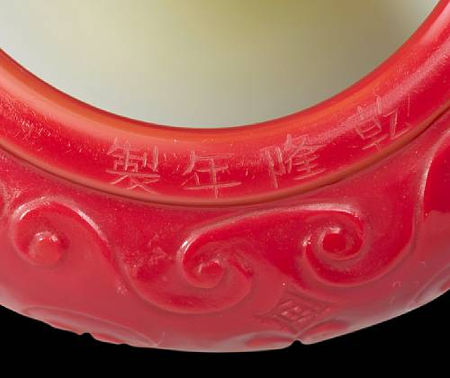

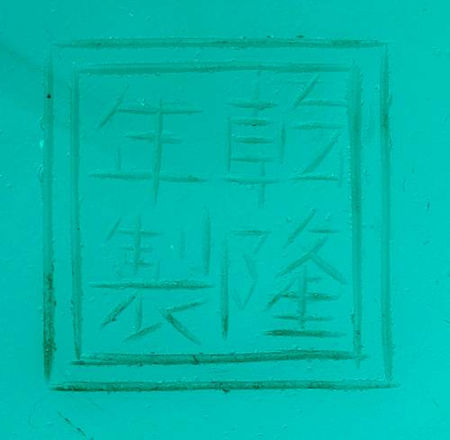
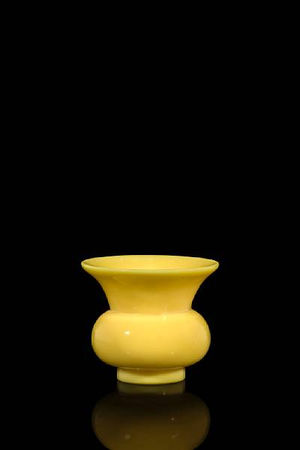

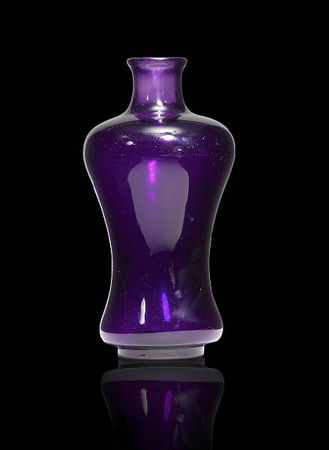

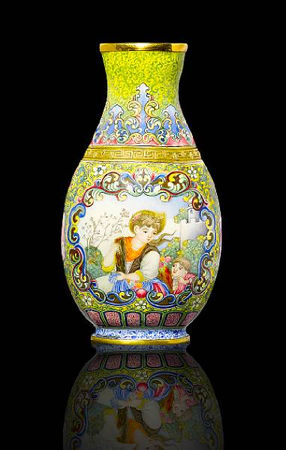





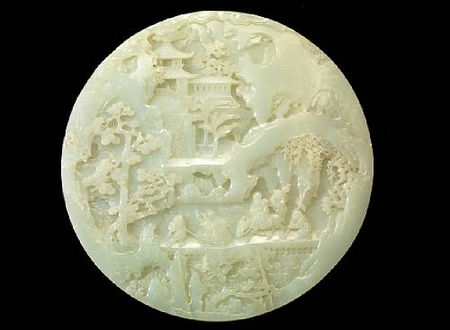


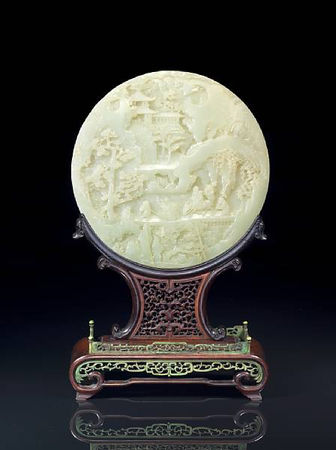

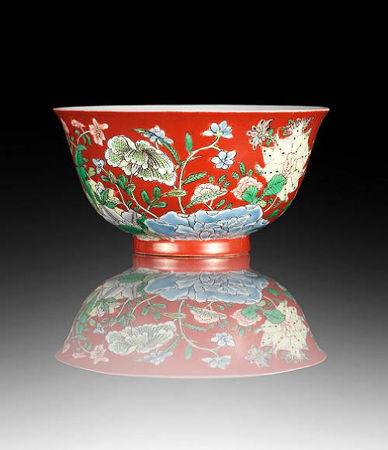





/http%3A%2F%2Fp9.storage.canalblog.com%2F92%2F51%2F119589%2F98216442.jpg)
/https%3A%2F%2Fassets.over-blog.com%2Ft%2Fcedistic%2Fcamera.png)
/https%3A%2F%2Fstorage.canalblog.com%2F77%2F60%2F577050%2F66527770_o.jpg)
/https%3A%2F%2Fstorage.canalblog.com%2F91%2F69%2F577050%2F66524735_o.jpg)